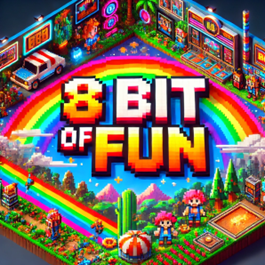
What makes good pixel art? Can you create a code so your classmate can recreate your piece?
In an ICT class of particularly artistic learners, the teacher knew that she needed to incorporate art into a project.
She showed a video called Pixel: A Pixel Art Documentary. Learners became familiar with the medium of pixel art, and most recognized it. Many learners in the class had played video games in which pixel art is prevalent.
Over the next two days, the teacher showed more pixel art documentaries. In small groups, learners co-constructed ideas on what made good pixel art, and then shared with the larger group. They researched pixel art and were given the task of making their own piece of pixel art in a square no bigger than 25 pixels by 25 pixels. In doing so, they were generating their own ideas and solving the visual problem of placing the boxes side by side so they would gradually turn, creating curved lines and representational images. During this time, learners had to create and adapt their plans often to achieve their envisioned artwork.
As the learners completed their works of art asynchronously, the teacher gave mini-lessons on how to name cells in a spreadsheet. Through a combination of direct instruction and practice, learners became well-versed in the syntax of naming cells. For example, “A3:H3 - yellow” would let a learner know that they needed to colour the third row, between the columns A to H, yellow. Their next task was to code their pixel artwork so that, when given a set of instructions and a grid, another learner could replicate the pixel artwork independently. At this point, they needed to adjust their plans if they were too difficult or too easy for someone else to recreate or too difficult for them to code.
As learners completed their code, the teacher gave learners each other’s coding instructions to keep it anonymous—learners did not know whose they received. They needed to put their trust in each other’s communication—the artists needed to trust that their code could be read, and the recreators needed to trust that the code they had been given was correct. The teacher highlighted that learners may have used different ways of articulating and representing their code to their peers. They needed to understand the naming syntax of the cells in order to be flexible and adjust to another person’s way of writing code.
Once a piece of pixel art had been replicated, the original artist received the re-creation as feedback. If there was a difference between the original and the re-creation, learners needed to figure out if it was a mistake in writing code or a mistake in reading code. They then took this feedback to make their own code better, or they gave feedback to the classmate on how they were reading the code.
Originals and re-creations were displayed side by side, and the project culminated in a gallery walk that celebrated the artistry in the classroom.
Cottee, SImon. Pixel: A Pixel Art Documentary. YouTube, 2010.